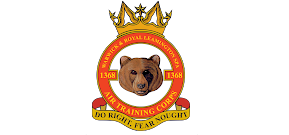Update Air Experience Flying (AEF) pre-event information
AEF is the abbreviation for Air Experience Flying. A chance for Air Cadets to fly a real aeroplane, usually an RAF Grob Tutor T1.
Air Experience Flight (AEF) pilots are current or former RAF pilots, or experienced commercial pilots who volunteer to pass on their knowledge and enthusiasm for flying to cadets. Many are former cadets themselves.
Your first trip will be both exciting and daunting.
To qualify (W&B Wing), all of the following criteria must be satisfied:
- Cadets must be 13 years old or older at the time of the AEF.
- First time flyers should take priority.
- Cadets must be enrolled.
- Cadets must weigh between 28kg – 110 kg clothed.
- Cadets must have parental consent to fly.
- All cadets must complete an Av Med 1 medical form downloadable from this SMS application.
What forms/docs to bring?
- All cadets must bring their 3822 or MyRAFAC app (with photo) with them on the day or they will be unable to fly.
- TG 23 Health Declaration forms are ALWAYS required if you have medical conditions (worth bringing TG 21 as well, just in case),
- RAFAC Av Med Form 1 (filled in and signed by hand, new form is needed which has OC signature also),
- Where aviation medical fitness is in doubt, hold a completed and countersigned RAF Form 6424 (latest form allows for other doctors than GP to sign),
- Escorting staff travelling will bring signed 2 FTS Form 012 sheet (new sheet asks to confirm that all cadets have been issued with fit to fly.pdf).
- Cadets will need to prove they've been issued with Fit to fly.pdf so having this in paper copy or on on phone would assist in this.
What to wear/bring?
- Wear your No 2C (working blue uniform) with parade shoes,
- Don't wear anything nylon, e.g., avoid nylon socks/tights,
- All, incl. females, to come in trousers in place of skirts and tights,
- Cadets are not to wear hair gel products,
- Bring packed lunch, drink (preferably water or still drinks rather than fizzy),
- Bring someone to do/read, e.g. book or even school work (if you like that sort of thing!),
- Have a card game ready rather than play on your phones.
What happens:
When you arrive you will be escorted into the briefing room and shown a safety video. Regardless of how many times you have been flying, you will still need to watch this video in case anything has changed. It also provides you with a recap of the safety procedures.
After the briefing you may be allowed to watch videos and await your turn in the aircraft. You may be able to go to a local museum.
When you are called forward you will be fitted with a flying suit, parachute and flying helmet. You will then be escorted to a waiting area to wait for an aircraft to become free.
Once one becomes available a member of staff will call you forward and escort you to the aircraft, where you will be seated, strapped in, and made ready for take-off. What you get up to is up to you – your pilot will probably ask you what you want to do – so have a think about this before you go flying.
Remember to ask pilot questions – you are there to learn as much as you are to have fun!
When will you come back?
This depends on when people fly and who is travelling in what transport. Often those that have not been flying before will be prioritized but this depends on what happens on the day. Assume that you need a way to inform parents/guardians of return time when you leave.




Comments
Post a Comment